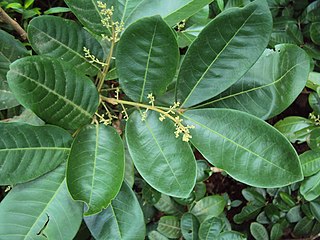
Aglaia is a genus of 121 recognised species of woody dioecious trees in the mahogany family Meliaceae. They occur in the subtropical and tropical forests of Southeast Asia, northern Australia and the Pacific.

Toona, commonly known as redcedar, toon or toona, tooni is a genus in the mahogany family, Meliaceae, native from Afghanistan south to India, and east to North Korea, Papua New Guinea and eastern Australia. In older texts, the genus was often incorporated within a wider circumscription of the related genus Cedrela, but that genus is now restricted to species from the Americas.

Palaquium is a genus of about 120 species of trees in the family Sapotaceae. Their range is from India across Southeast Asia, Malesia, Papuasia, and Australasia, to the western Pacific Islands.

Dillenia is a genus of flowering evergreen or semi-evergreen trees and shrubs in the family Dilleniaceae, native to tropical and subtropical regions of southern Asia, Australasia, and the Indian Ocean islands.
Dischidia is a genus of plants in the “dog-bane” family Apocynaceae, collectively known as the “milkweeds”. They are epiphytes, native to tropical areas of China, India as well as Bhutan’s southern borders, wherever minimal frost occurs. Additionally, they are known from most areas of Mainland Southeast Asia, including forested areas of Myanmar, Thailand, Vietnam, Cambodia, Laos, and some parts of Indonesia, Malaysia and Singapore. Several species are also native to Papua New Guinea and northeastern Australia.
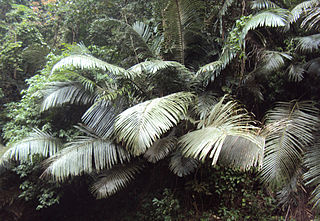
Arenga wightii is a species of flowering plant in the family Arecaceae. It is native to the Southern Western Ghats in Kerala in India. This palm has various uses in its communities. Local tribal communities depend on this plant for starch and religious ceremonies. It is also used to cover the roofs of houses due to its string resemblance to coconut leaves. Scientists have discovered that this palm has medicinal value. It is said to have antimicrobial and antioxidant phytochemicals. It is threatened by habitat loss.
Aglaia exstipulata is a species of plant in the family Meliaceae. It is found in Malaysia, Myanmar, Singapore, Thailand, and Vietnam.

Glyptopetalum is a genus of plant in the family Celastraceae.
Siphonodon celastrineus is a species of plant in the family Celastraceae. It is found in Cambodia, India, Myanmar, and Vietnam.
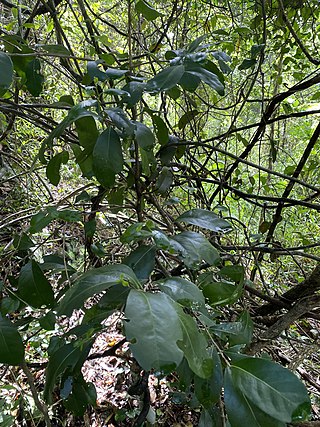
Siphonodon is a small genus of flowering plants in the family Celastraceae.

Caryota obtusa is a species of flowering plant in the palm family Arecaceae. It is native to India, Laos and Thailand. The palm is commonly called giant fishtail palm or Thai giant caryota. It can reach 20 meters or more in height and is thus considered a tree. It is monocarpic meaning it flowers once, then dies. Its inflorescence can reach 6 meters or more in length.
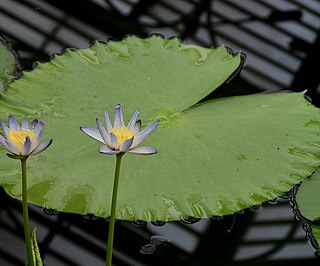
Nymphaea macrosperma, water lily, is an emergent water plant native to northern Australia.
Salvia plectranthoides is a species of flowering plant in the family Lamiaceae. It is an annual or biennial plant that is native to Guangxi, Guizhou, Hubei, Shaanxi, Sichuan, and Yunnan provinces in China, along with Bhutan and Sikkim in India. It is typically found growing on hillsides, along valley streams, and forests at 800 to 2,500 m elevation. S. plectranthoides grows on one to a few erect or ascending stems 20 to 43 cm tall. Inflorescences are widely spaced verticillasters in elongated racemes or panicles, with a corolla that is red to purplish or purple-blue, rarely white, and 1.1 to 2 cm.

Bruguiera is a plant genus in the family Rhizophoraceae. It is a small genus of five mangrove species and three hybrids of the Indian and west Pacific Ocean region, its range extending from East Africa and Madagascar through coastal India, Sri Lanka and Southeast Asia to northern Australia, Melanesia and Polynesia. It is characterised by calyces with 8-16 lanceolate, pointed lobes, 16-32 stamens, explosive release of pollen, and viviparous propagules. It is named in honour of French explorer and biologist Jean Guillaume Bruguière (1750–1798). Recently, the eighth taxa of Bruguiera, B. × dungarra was recognised as occurring in northern Australia.

Glossocarya is a genus of flowering plants in the mint family, Lamiaceae, first described in 1843. It is native to Indochina, Sri Lanka, New Guinea, and Queensland.
- Glossocarya calcicolaDomin - Queensland
- Glossocarya coriaceaMunir - Queensland
- Glossocarya crenataH.R.Fletcher - Thailand
- Glossocarya hemiderma(F.Muell. ex Benth.) Benth. ex B.D.Jacks. - Queensland, New Guinea
- Glossocarya longifloraH.R.Fletcher - Thailand
- Glossocarya mollisWall. ex Griff - Myanmar, Thailand, Vietnam, Paluan Rabana in Malaysia
- Glossocarya premnoidesRidl. - Thailand, Perlis in Malaysia
- Glossocarya puberulaMoldenke - Cambodia
- Glossocarya scandens(L.f.) Trimen - Sri Lanka
- Glossocarya siamensisCraib - Thailand, Vietnam
Hymenopyramis is a genus of plants in the family Lamiaceae, first described in 1843. It is native to Indochina and to the Hainan Province of southern China.
- Hymenopyramis acuminataH.R.Fletcher - Thailand, Vietnam
- Hymenopyramis brachiataWall. ex Griff. - Thailand, Vietnam, Myanmar; naturalized in India
- Hymenopyramis canaCraib - Hainan, Laos, Cambodia, Thailand
- Hymenopyramis parvifoliaMoldenke - Thailand
- Hymenopyramis pubescensMoldenke - Thailand
- Hymenopyramis siamensisCraib - Laos, Cambodia, Thailand
- Hymenopyramis vesiculosaH.R.Fletcher - Thailand
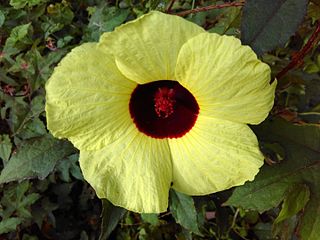
Hibiscus hispidissimus is a species of flowering plant in the family Malvaceae. It is found in South East Asia.
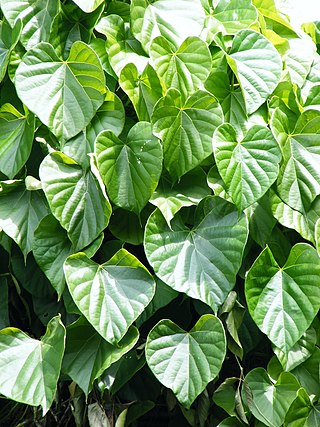
Tinospora is a genus of flowering plants. Its species have a succulent, woody, climbing shrub habit. Thirty-four species are currently recognized. Species generally send down long aerial roots from host trees. They have corky or papery bark. They are found in tropical and sub-tropical parts of Asia, Africa and Australia. The most common species are T. cordifolia and T. crispa.
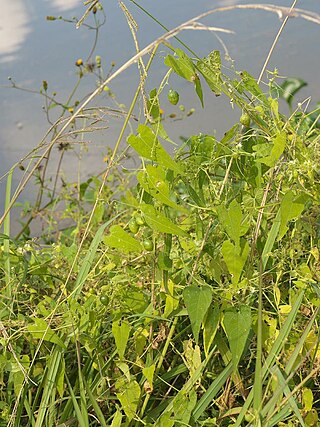
Actinostemma is a genus of flowering plant in the gourd family Cucurbitaceae. It is native to east Asia. They are slender, weakly twining/climbing annual herbs.
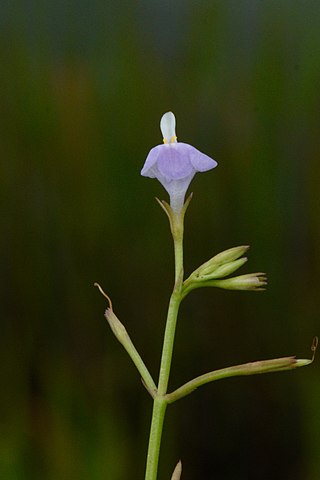
Bonnaya antipoda is a herbaceous perennial plant belonging to Linderniaceae family. It is native to tropical and sub-tropical Asia and Australia.















